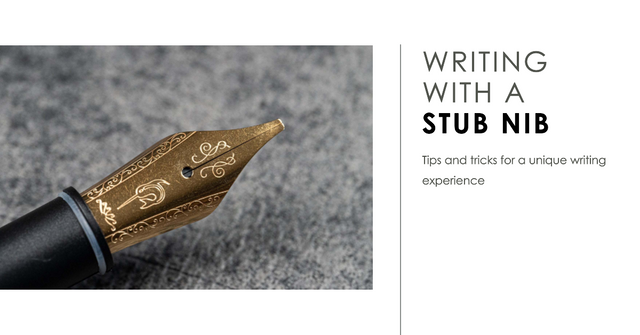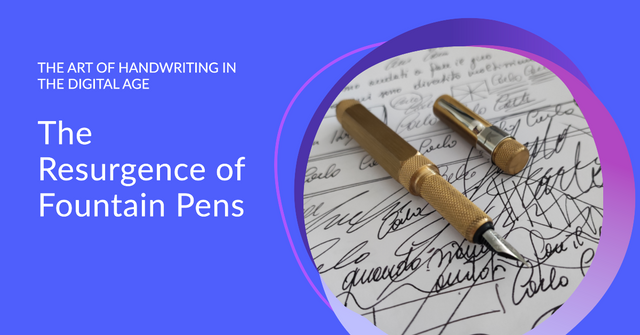Key Takeaways
- Capillary action and surface tension are key scientific principles behind the functioning of fountain pens.
- Capillary action allows ink to flow from the reservoir to the nib, enabling smooth writing against gravity.
- Surface tension prevents ink from spilling and controls its flow onto the paper.
- Pen design, ink properties, and nib characteristics impact capillary action and surface tension.
- The nib is the heart of a fountain pen, affecting ink flow, writing experience, line thickness, and ink saturation.
- The design of the nib, including its size, shape, and slit width, influences the writing experience.
Introduction
In an era where digital tools dominate, the fountain pen stands as a testament to the timeless value of traditional writing instruments.
Despite the proliferation of keyboards and touchscreens, the fountain pen has not only survived but thrived, maintaining its undying relevance in the digital age.
The Undying Relevance of Fountain Pens in the Digital Age
Fountain pens offer a unique writing experience that modern technology has yet to replicate.
They are cherished for their:
- Elegance: Fountain pens are often seen as a symbol of sophistication and class. Their intricate designs and high-quality materials make them more than just writing tools—they are pieces of art.
- Personalization: Unlike disposable pens, a fountain pen adapts to its user's writing style over time, creating a unique bond between the pen and its owner.
- Sustainability: As refillable instruments, fountain pens contribute less waste compared to disposable pens, aligning with today's growing emphasis on sustainability.
Setting the Stage: Exploring Capillary Action and Surface Tension in Fountain Pens
The magic of fountain pens lies in their science.
Two fundamental physical phenomena—capillary action and surface tension—play crucial roles in the functioning of these pens.
- Capillary Action: This is the ability of a liquid to flow in narrow spaces without the assistance of, and in opposition to, external forces like gravity. In fountain pens, capillary action draws ink from the reservoir to the nib.
- Surface Tension: This is the elastic tendency of liquids which makes them acquire the least surface area possible. In the context of fountain pens, surface tension controls the flow of ink, preventing it from spilling out of the nib.
In the following sections, we will delve deeper into these fascinating concepts, exploring how they contribute to the charm and functionality of fountain pens.
Capillary Action: The Invisible Force in Your Fountain Pen
The science behind the smooth ink flow in a fountain pen is largely attributed to a phenomenon known as capillary action.
Capillary Action: A Simple Explanation for the Layman
Capillary action, also known as capillarity, is a physical process where a liquid moves up or against the force of gravity within a narrow space, such as a thin tube, or across the surface of a porous material.
This movement occurs due to the interplay of two forces: cohesion (the attraction between similar molecules, such as water-to-water) and adhesion (the attraction between different molecules, such as water and glass).
The Crucial Role of Capillary Action in the Functioning of Fountain Pens
In a fountain pen, capillary action is the invisible force that pulls ink from the reservoir, through the feed, and finally to the nib, enabling the pen to write.
It's what allows the ink to flow smoothly onto the paper, even against the pull of gravity when you're writing upwards or at an angle.
Factors that Influence Capillary Action in Fountain Pens
Several factors can influence capillary action in fountain pens, including:
- The Impact of Pen Design and Material Choices on Capillary Action: The design of the pen, particularly the feed (the component that delivers ink to the nib), can greatly affect capillary action. Materials used in the pen can also impact how well capillary action works. For instance, certain materials may enhance the adhesion force, improving ink flow.
- How Ink Properties Affect Capillary Action: The viscosity and chemical composition of the ink can influence capillary action. Thicker inks may flow more slowly, while certain additives in the ink can affect its adhesive properties.
- The Role of Nib Characteristics in Capillary Action: The size, shape, and material of the nib can impact capillary action. For example, broader nibs may facilitate a faster ink flow due to a larger capillary space.
Understanding these factors can help you optimize your fountain pen for the best writing experience.
Surface Tension: The Unsung Hero of Ink Flow
While capillary action is a key player in the functioning of a fountain pen, it's not the only force at work.
Surface tension also plays a pivotal role in controlling the ink flow.
Demystifying Surface Tension: What It Is and Why It Matters
Surface tension is a physical property of liquids that causes their surface to behave like a stretched elastic sheet.
It's the force that allows insects to walk on water, and droplets to form.
In the context of fountain pens, surface tension is what prevents the ink from spilling out of the nib and controls how it transfers onto the paper.
The Influence of Surface Tension on Ink Flow in Fountain Pens
In a fountain pen, surface tension works in tandem with capillary action to regulate ink flow.
While capillary action draws the ink towards the nib, surface tension prevents it from flooding out, ensuring a smooth and controlled release of ink as you write.
The Intricate Relationship between Surface Tension and Ink Viscosity
Ink viscosity, or its 'thickness', can influence surface tension.
Higher viscosity inks tend to have higher surface tension, which can slow down the ink flow.
Conversely, lower viscosity inks have lower surface tension, which can lead to faster, but potentially messier, ink flow.
How Different Ink Formulations Impact Surface Tension in Fountain Pens
Different ink formulations can have varying effects on surface tension.
For instance, inks with certain additives or dyes may alter the surface tension, affecting the ink flow.
Understanding this can help you choose the right ink for your fountain pen and writing style, ensuring a satisfying writing experience.
The Nib: The Heart of a Fountain Pen
At the heart of every fountain pen lies the nib.
This small piece of metal is where all the science we've discussed so far comes into play, directly affecting the pen's performance and the overall writing experience.
Understanding the Anatomy and Functionality of a Fountain Pen Nib
A fountain pen nib is typically made of metal, often gold, steel, or titanium, and consists of several parts:
- Tip or Point: The part that comes into contact with the paper. It's usually coated with a harder metal like iridium to resist wear.
- Tines: The two halves of the nib that ink flows between.
- Slit: The thin cut between the tines that facilitates capillary action.
- Breather Hole: A hole that helps regulate air and ink flow.
The nib is where the ink, guided by capillary action and controlled by surface tension, meets the paper.
How Nib Design Influences Ink Flow and Writing Experience
The design of the nib, including its size, shape, and the width of the slit, can greatly influence the ink flow and the writing experience.
For instance, broader nibs usually provide a wetter and smoother writing experience, while finer nibs offer more precision but may feel scratchier on paper.
The Role of the Nib in Determining Line Thickness and Ink Saturation
The nib also plays a crucial role in determining the line thickness and ink saturation.
A broader nib will produce thicker lines and more saturated strokes, while a finer nib will produce thinner, less saturated lines.
The Interaction between Nib Characteristics and Capillary Action
The characteristics of the nib, such as its material and design, can influence capillary action.
For example, a wider slit can enhance capillary action, leading to a wetter writing experience.
Conversely, a narrower slit may reduce ink flow, resulting in a drier writing experience.
Understanding this interaction can help you choose the right nib for your writing preferences.
Fountain Pen Maintenance and Troubleshooting
Just like any precision instrument, a fountain pen requires regular maintenance to keep it performing at its best.
Understanding common issues and how to address them can greatly enhance your writing experience.
Essential Care Tips for Maintaining Optimal Ink Flow
Proper maintenance of your fountain pen can ensure a consistent and smooth ink flow. Here are some essential care tips:
- Regular Cleaning: Rinse the nib and feed with lukewarm water until the water runs clear. This removes dried ink and debris that can disrupt ink flow.
- Proper Storage: When not in use, store your pen upright with the nib facing up to prevent ink from clogging the feed.
- Use Suitable Ink: Not all inks are suitable for fountain pens. Some inks can be too thick or contain particles that can clog the feed.
Common Fountain Pen Issues and Their Solutions
Fountain pens, while elegant, can sometimes present issues. Here are some common problems and their solutions:
- Poor Ink Flow: This could be due to a clogged feed or a misaligned nib. Cleaning the pen thoroughly or adjusting the nib alignment can often resolve this issue.
- Ink Leaks: This could be due to a poor seal between the pen's components. Ensuring all parts are tightly fitted can help prevent leaks.
How to Adjust Ink Flow with Nib Tuning Techniques
Nib tuning can be a useful technique to adjust ink flow to your preference.
This involves adjusting the gap between the nib tines.
A wider gap increases ink flow, while a narrower gap decreases it.
However, nib tuning should be done carefully to avoid damaging the nib.
Addressing Problems Related to Capillary Action and Surface Tension
Issues with capillary action and surface tension can often be resolved by adjusting the ink viscosity or changing the nib.
For instance, if the ink flow is too fast, a thicker ink or a nib with a narrower slit can help.
Conversely, if the ink flow is too slow, a thinner ink or a wider nib can improve it.
The Future of Fountain Pens: Innovations and Developments
Even in the digital age, the fountain pen continues to evolve, with new innovations and developments enhancing its functionality and appeal.
Recent Advancements in Fountain Pen Technology
Recent years have seen several advancements in fountain pen technology. For instance:
- Improved Nib Designs: Modern nibs are being designed to offer smoother writing experiences and better ink flow control.
- Advanced Filling Systems: New filling mechanisms, such as vacuum and piston fillers, allow for larger ink capacity and easier refilling.
The Exciting World of New Materials and Ink Formulations
The exploration of new materials for pen bodies and nibs, such as titanium and carbon fiber, is opening up new possibilities in terms of design and functionality.
Similarly, advancements in ink formulations are leading to a wider range of colors, faster drying times, and improved flow characteristics.
How Modern Technology is Revolutionizing the Science of Fountain Pens
Modern technology is also playing a role in revolutionizing the science of fountain pens.
For example, computer-aided design (CAD) is being used to create more precise and intricate pen designs.
Meanwhile, the understanding of fluid dynamics is helping to improve the understanding of capillary action and surface tension in pens, leading to better ink flow control.
The future of fountain pens is indeed bright and exciting.
More Resources
- The Fascinating History of Fountain Pens
- How to Write with a Fountain Pen
- The Art of Handwriting: The Renaissance of Fountain Pens in the Modern World
- Can You Bring Fountain Pens on a Plane?

